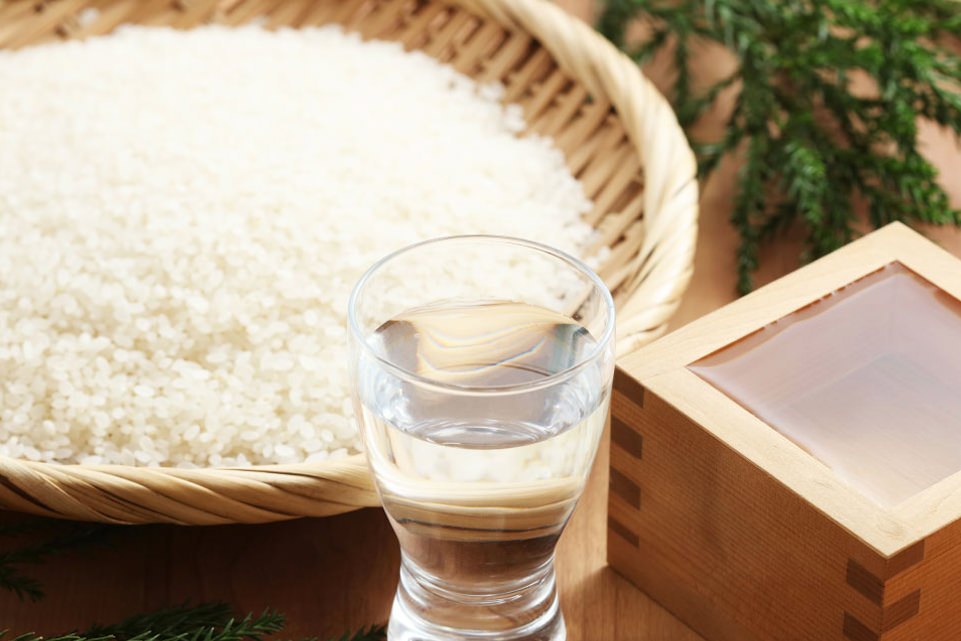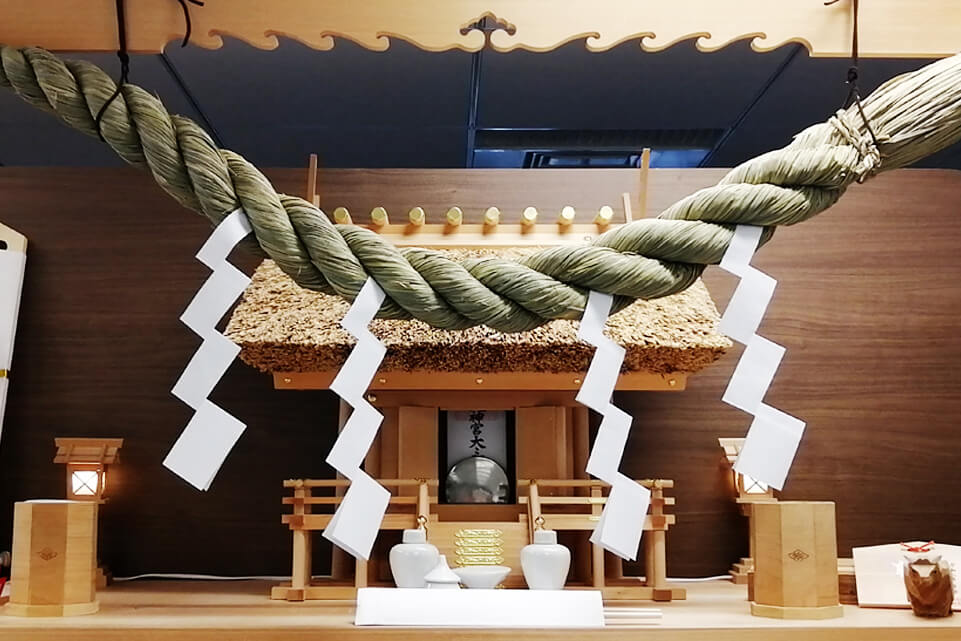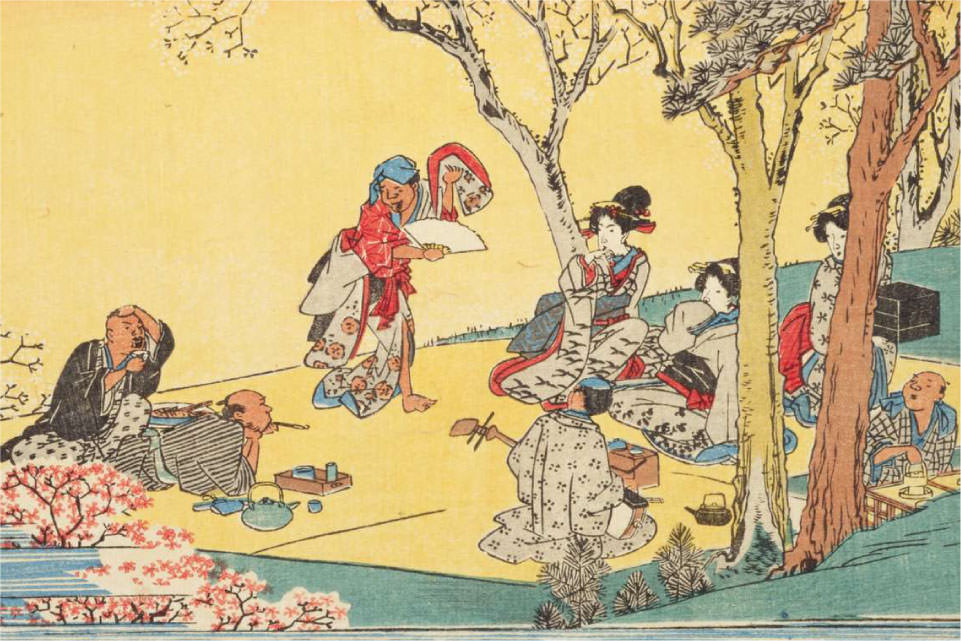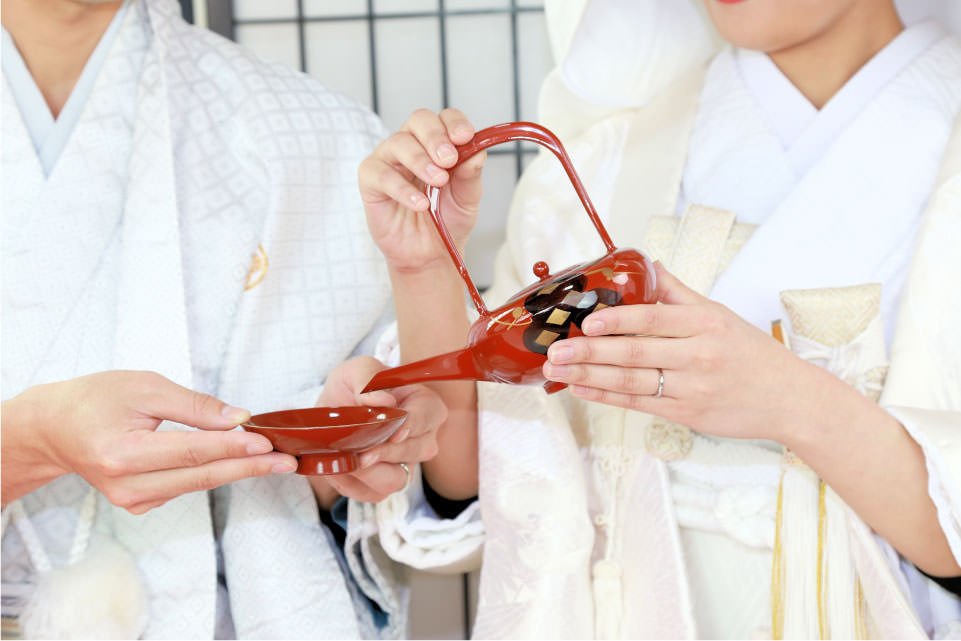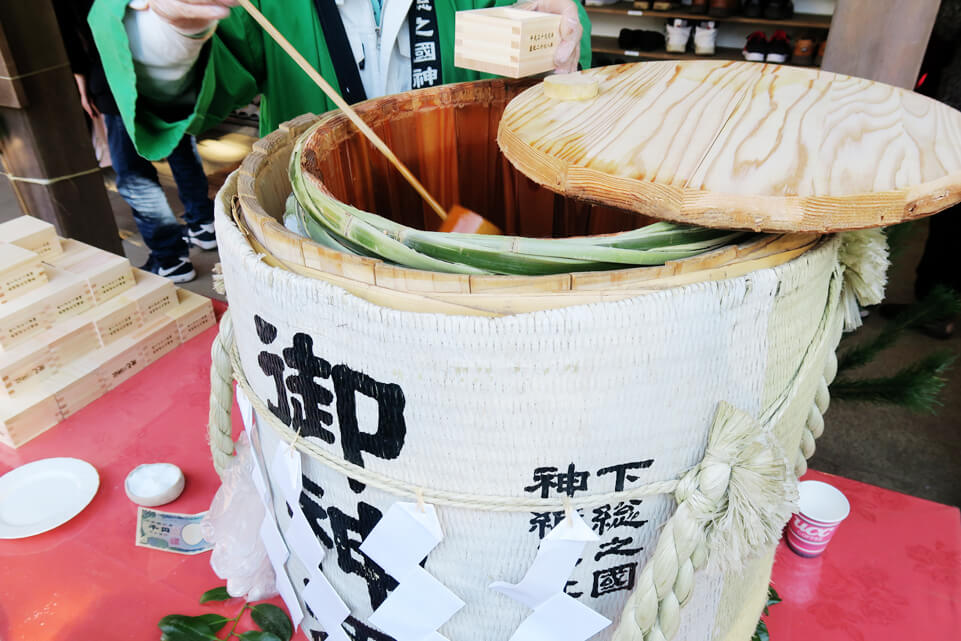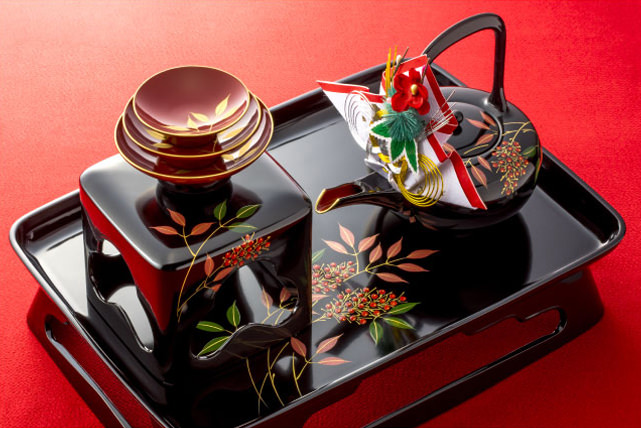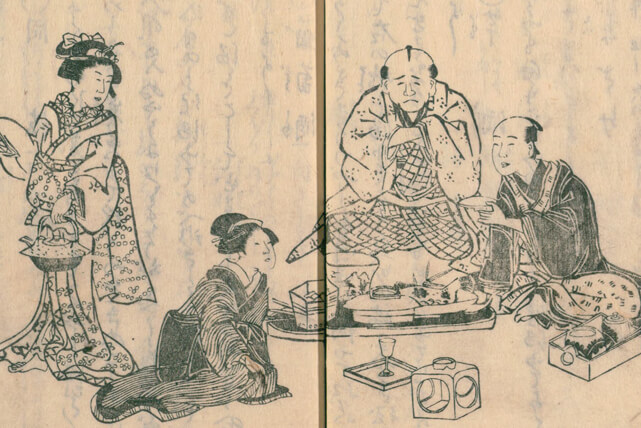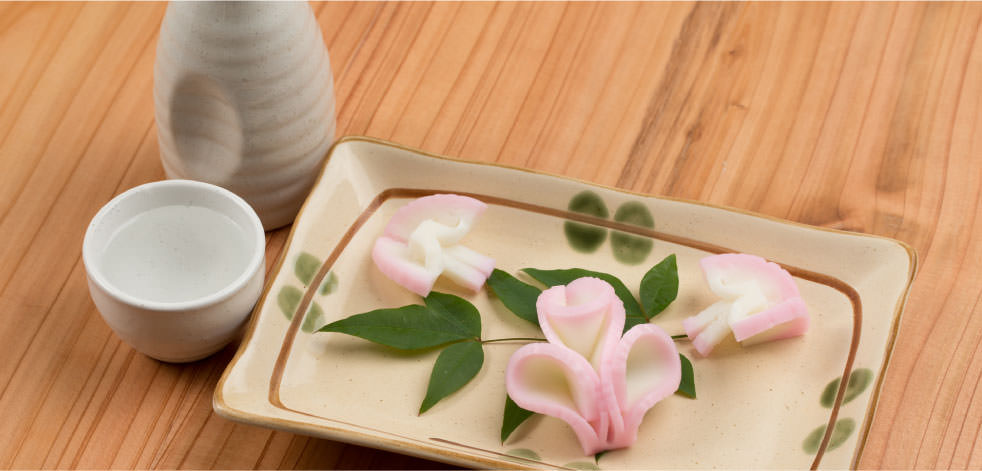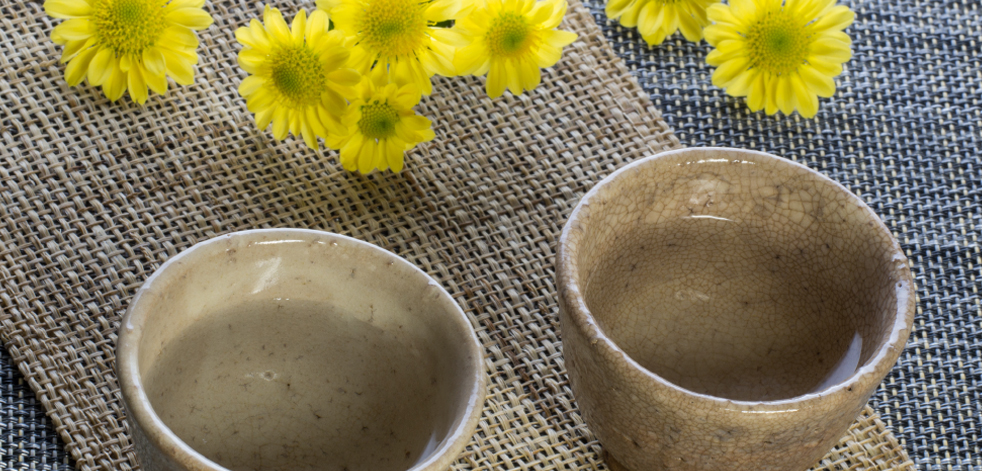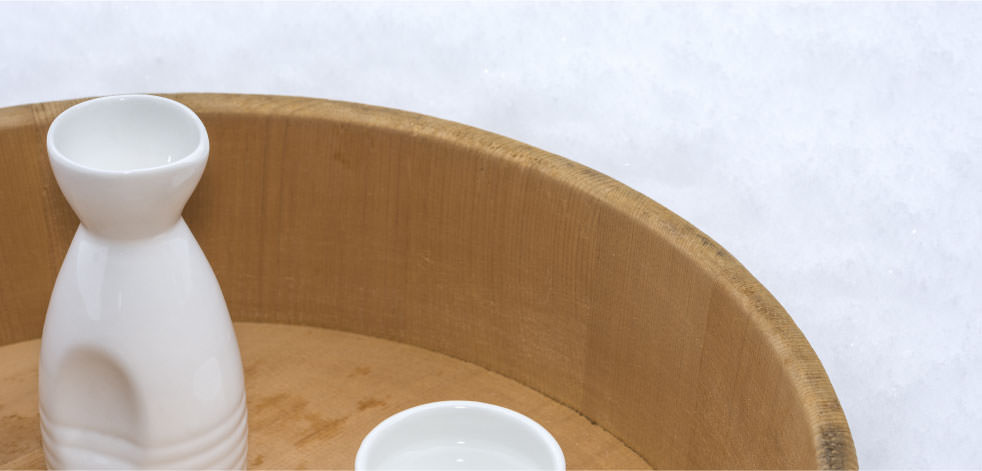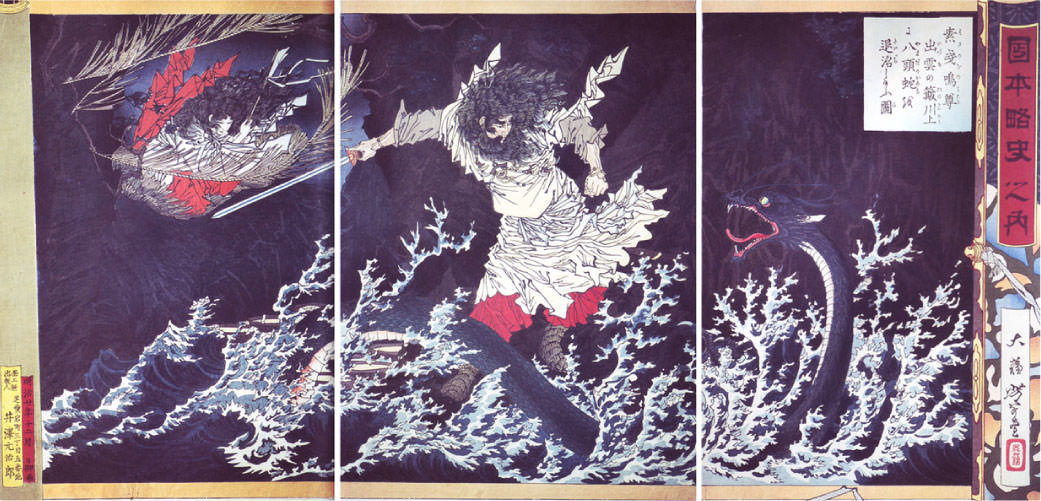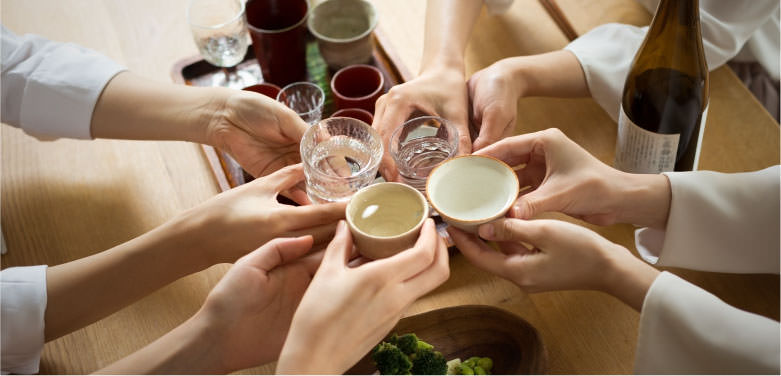Sake in Japanese Tradition:
Celestial Offering
Japan is an island country stretching over 3000km from north to south, on the eastern edge of Asia. Due to the location and area, Japan enjoys diverse natural resources. The foundation of Japanese culture centers on the respect and worship of nature and ancestors. Japanese people make offerings to gods ruling over nature and ancestral spirits to honor them and ask for prosperity and protection in return.
Rice has been the most valuable grain and a staple for Japanese people for centuries. As a result, sake was one of the finest offerings to the gods along with rice cakes and, of course, rice itself. To this day, sake is an important gift to gods in Japanese tradition. At Shinto shrines, rows of donated sake barrels and bottles sit proudly on display.
Forms of Sake as an Offering
Preparing sake as an offering can take many forms. An offering can take place at an altar inside a home or at a religious ritual. An example of this sake offering ritual is when building a house. Participants summon a local priest for a ritual to "soothe" the god of the land before the construction begins. In this ritual, the priest pours sake onto the ground as an offering. To symbolize the sharing of the drink with gods, sake is always served to the gods first. The participants enjoy sake during the feast that follows the ritual.
Sake brewing has a close relationship with nature and natural processes. As a result, many sake brewers also take part in this spiritual tradition. Most brewers have a small altar inside the brewery. Some brewers also visit their local shrine at the start of a brewing season to ask for a successful season. They visit once again at the end to thank the gods for the good brew.

